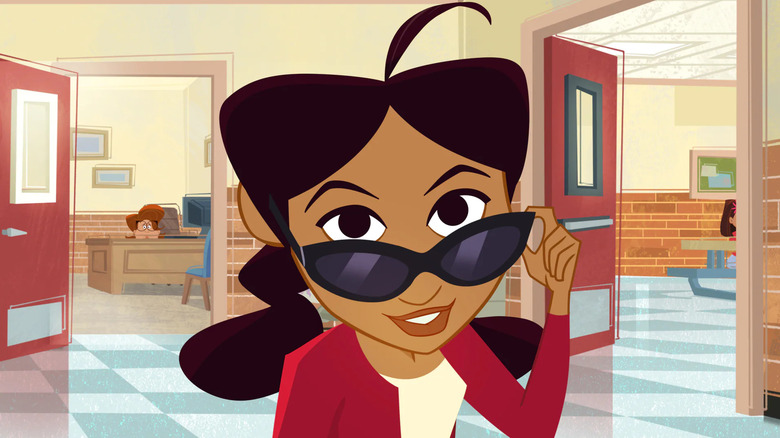
The early '00s were a fascinating time for animated shows. You still had plenty of genre-heavy cartoons that followed in the tradition of Saturday morning shows and the kind of experimental and irreverent tones of early Cartoon Network and Nickelodeon projects. But there was also a wave of cartoon comedy-dramas about tweens and teens that took a rather grounded approach to telling stories, while still offering some cartoony weirdness that makes them stand out -- shows like "As Told By Ginger," "The Weekenders," "Hey Arnold," and also "The Proud Family."
"The Proud Family," in particular, was a big deal for its time. It was one of the first animated shows with a Black creator and a Black cast, and it tackled complex themes like race and religion. Like "The Simpsons," it created a world filled with memorable side characters and one-off characters that made the world feel lived-in.
After 17 years, creator Bruce W. Smith and executive producer Ralph Farquhar returned to bring the show back with "The Proud Family: Louder and Prouder," which saw the cast return for new wacky adventures.
/Film spoke with Smith and Farquhar ahead of the release of season 2 of "The Proud Family: Louder and Prouder" about the stacked cast of the revival series, being the first TV PG-rated Disney show, studio notes, and more.
Note: This interview has been lightly edited for clarity and brevity.
'We Had To Write Him A Character In The Show Because He Really Wanted To Be In The Show'
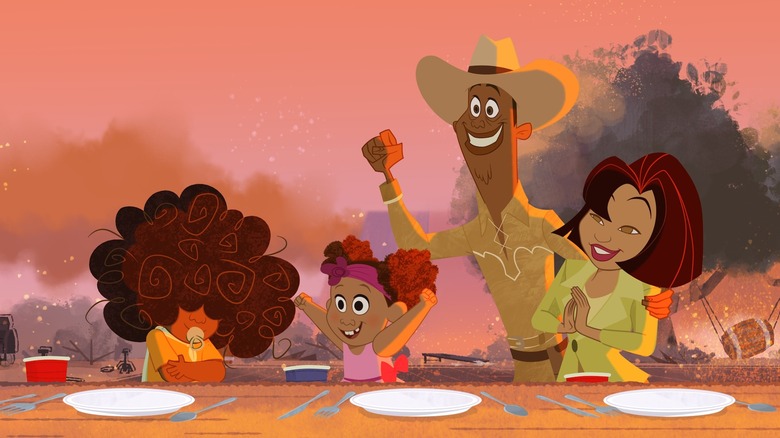
This reboot has an insane cast. Did you have people in mind when you started casting?
Farquhar: Well, in some cases we had people in mind, but in general, what we do is we sit around and we come up with names of people we want to work with and we go and ask them. And almost always they say yes. And also we have people who come to us and say they want to be in the show. One name that comes to mind is Chance the Rapper.
Smith: Right. We had to write him a character in the show because he really wanted to be in the show. And we had offered him a role of an existing character and he turned it down because he wanted his own character. So what do you do with that? Now, you got to go to the lab and write a character.
Farquhar: Chance had us arm behind our back. [laughs] "Write me a part."
Smith: But that's a fun challenge to have. It's a good problem, as I describe it, to have, because like Ralph's saying, for the most part, we think about people we want to work with and then we try to write a character around that person. And for the most part, that's really paid off. Even guest stars coming to play themselves. That's always fun when you get a character coming and play a general extension of themselves. That's always cool.
Has there been a particular person that surprised you how easy was to get them to sign on for the show?
Smith: Easy is a relative word, because even getting an actor to say yes does not mean that they'll be in the booth tomorrow, you know what I mean? Now you've got to work with their schedule, and who knows what time of the day we're going to end up getting them. So we've had recording sessions in odd parts of the day or morning or evening or whatever.
Farquhar: Bruce and I, we don't do the work, casting does the work. So we put out the request, we don't know what they do. They go do the leg work. That's when we say, "Oh hey, we got Chance the Rapper." And then they call up Chance the Rapper's representative and say, "We paying him five dollars," and they say, "Get out of here."
Smith: So it's a lot of back and forth.
Farquhar: It's a lot of back and forth. It's never easy.
'When It Gets Translated In Animation, Somehow There's A Process Where It Becomes Acceptable'
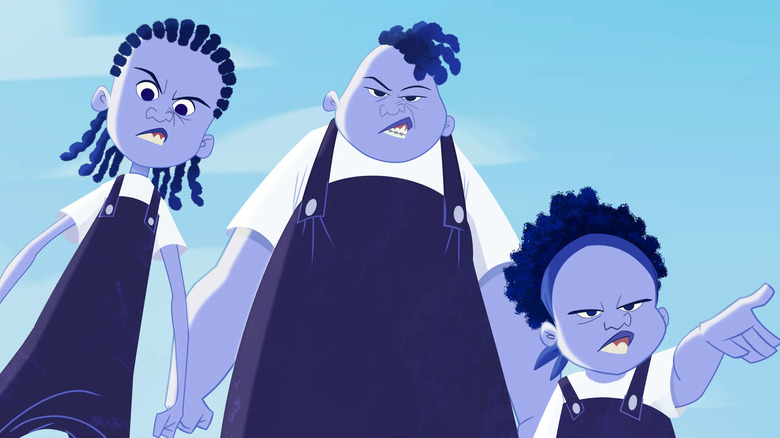
This show is reportedly Disney's first TV PG-rated show, so what kind of liberties come with that? What does that allow you to do that you couldn't before?
Smith: Well, once we fought to elevate the show to a PG, because we were telling teen stories, once we elevated Penny's age, we knew that we weren't going to tap dance around any subject matter anymore. But in order to do that, the chains got to be loosened a bit more. We got to be able to have a language that families can --
Farquhar: Well, we didn't know there was a PG rating. Remember, that was what they came at us with when they saw the show.
Smith: We had to go in and fight for what PG meant. Remember? That's what it was. They gave us a PG rating, but they didn't know what that was going to translate to for us. So once we gave them the translation, they were like, "Well, what is this?" "This is PG, that's what this is."So we had a discussion and we ended up, thankfully, on the other side of it, once we convinced them that the material can actually translate in animation. In other words, an odd thing happens in the process of animation. Some jokes, when you look at them on the page, may seem a bit more risqué; even though it's funny, it's walking a line. But all of a sudden, when it gets translated in animation, somehow there's a process where it becomes acceptable, because there are jokes that we dropped early on because the executive brass was kind of nervous about certain lines or whatever.And then after the animation was done, we dropped the line back in. [That's] a little show-making judo that I'm dropping you behind the scenes on, that I shouldn't be doing. But it was a way to preserve a line that we all thought was funny, that we knew it was going to work. "Just let it breathe, let it breathe and let the process happen to you and I can show you how this is going to work." So through the magic of animation, which is a magical medium, and that's the beauty of it, too. It's something that is the most intelligent magic trick and the most whimsical magic trick that you can visually display, and we can take the most "walking the line" material that's incredibly funny and thought-provoking and all the things that you want in an animated show or movie or whatever, and the magic of animation makes it digestible, makes it palatable.
That's the fun of working on the show is constantly proving that proof of concept. I love to see Ralph when we're in script meetings and Ralph fighting for his material and I know what is going to happen on the other side -- this is going to work out just fine. But I love Ralph when he's passionate about this material. "This is going to work!" And I'm like, "Of course. Yeah, of course it is. We can make these lines work, we can make these lines work." But when you're just seeing one phase of it and Ralph is the only one fighting, it's a hard thing. It's a hard thing, but it's fun. When you come out the other side of it, the way we do it makes it really fun and worth it. I think that when the medium gets really fun material to play with, we can be very fanciful with the end result, and that's the fun of it.
'How Do You Do That In Animation?'
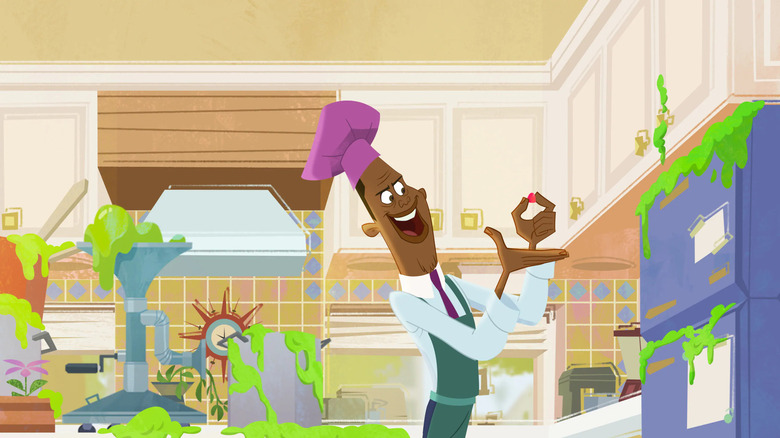
Is there any particular joke or storyline that you remember having trouble getting past the executives?
Smith: Oh, I remember. Right away, I know what it was. There was one episode in the previous first version, which was -- setting the tone in all this is key to me. The tone has to be right there in front of you so you actually can't get away with certain jokes. One joke, it was written in the script, but it was always tough for the execs to follow, and that was when Oscar got the Black slapped off of him.
Getting the Black slapped off you is terminology in the hood that you use all the time, when you just had enough of somebody, right? "I'll slap the Black off of you." But how do you do that in animation? So we found a way to do it in animation that's hysterical, but when you read it on the page, it's already like, "We can't do this." And when you see it, you're like, "Oh, they did it." That's how it works.
Farquhar: Well, one joke we got in the first was -- too late now guys, you can't pull it out -- LaCienga and the Big Feet. When LaCienga had the big feet, she was the swimmer. Sugar Mama turns to Felix and says, "She's from a long line of people with big feet, she's got big feet, my grandfather had big feet, I've got big feet." And Sugar Mama said, "Papi, you got big feet like that?" Papi pulled out his feet, and she's like, "Woo, I'm in love." That's that went through. Wow. We never thought that would go through.
'I'm Probably Most Proud Of That Episode From Season 2'
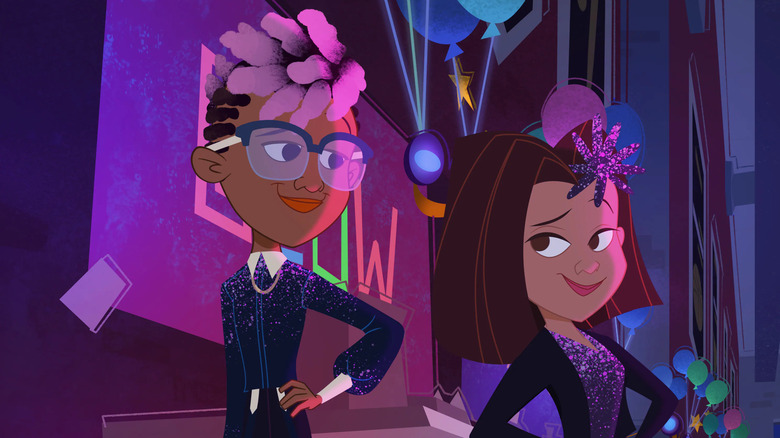
With the liberties that come with the new show and the new rating, are there particular stories or themes that you couldn't do in the first show that you can do now?
Smith: Well, it's all about, maybe subject matter kicks off. Even this version, in season 1 of the newest iteration of "Proud," I remember when we were pitching out stories initially, and there was one story that we pitched out that was always kind of the conversation stopper, if you will. And it basically -- you'll see it, it's part of season 2 now -- and it basically deals with race relations with the kids. Now, the first time we pitched this story, everybody laughed about the other three stories we're pitching, because laughter's always key in the room. And when Ralph pitched the story, it got uncomfortable laughs. I don't want to tell you what it's about, but you've got to watch season 2 and you'll see the story. It involves Zoe and the girls discovering that there's race issues that separate them.
When Ralph pitched this in the room initially, it became uncomfortable -- so uncomfortable that it was actually an episode that was -- I'm giving you an exclusive peek behind the curtain -- it was an episode that was supposed to be in season 1 that because it was a little testy, we moved it to season 2. But thankfully we got a chance to do it because once it was done, the episode is beautiful because, again, the medium of animation can make things palatable and make you understand how this story can be told.
I'm probably most proud of that episode from season 2 because it is one that really -- it's humorous, it's funny, it's controversial, it doesn't wrap itself up all neat, and it's one that I think people will be talking about for a while.
What character has changed the most in how you approach them, now that you have more leeway to tackle certain subjects and stories?
Farquhar: Well, I think probably the one character that we certainly updated and changed from a design point of view and even how we treat the character within the scripts is the Michael character, who is a member of the LGBTQ community. Something that was obvious the first time around, but we didn't speak to it explicitly. Now we do, and not only that, we populated our world with additional characters from the LGBTQ community. So that is probably one of the biggest changes, and that's playing out in this season and even beyond, be quite honest.
Smith: What we can say about Michael is that even in season 2, you'll see the evolution of Michael. So you're witnessing the evolution of Michael live, because of how the character is evolving under this LGBTQ umbrella. He's evolving by episode. I think that's very interesting to see, because I hadn't seen that.
"The Proud Family: Louder and Prouder" premieres February 1, 2023 on Disney+.
Read this next: The Top 20 Disney Animated Villains Ranked
The post The Proud Family: Louder and Prouder Creators On The Season 2 Episode They're Most Proud Of [Exclusive Interview] appeared first on /Film.
